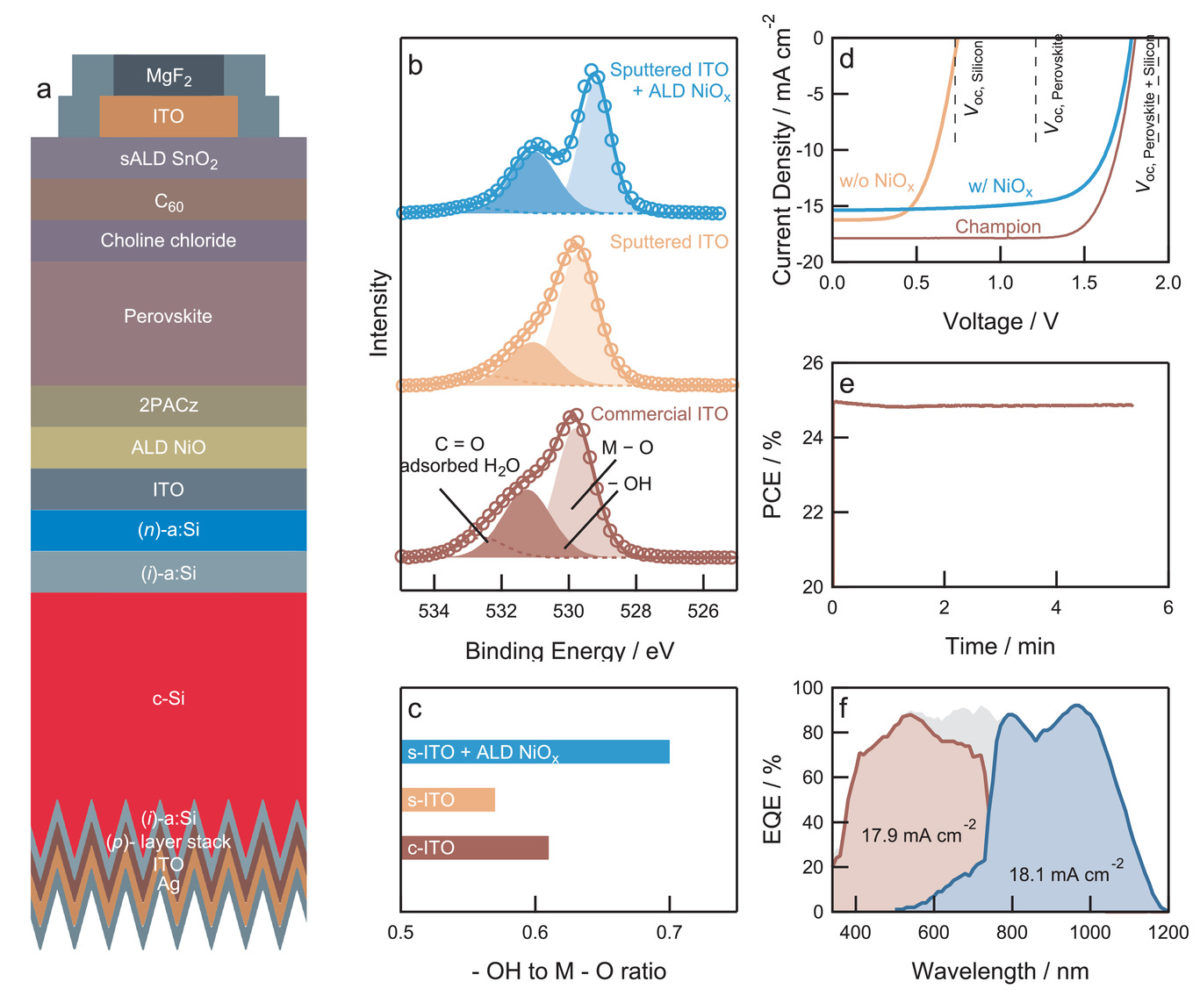Eindhoven University of Technology researchers in the Netherlands have designed an integrated solar-assisted water-splitting system with a flow electrochemical cell and a monolithic perovskite-silicon tandem solar cell.
“Our work gives a first demonstration of how a perovskite/silicon tandem cell can be combined with a water electrolyzer system,” researcher René Jannsen told pv magazine. “To make this into a successful commercial product many steps still have to be taken. This involves upscaling the technology, addressing stability in greater detail, and use of more earth-abundant catalysts in the water-splitting reaction. ”
The scientists built an electrochemical (EC) flow cell with an active area of 4 cm2 and a two-compartment design. For the tandem solar cell, they combined a perovskite top cell and a bottom cell based on a silicon heterojunction architecture. They said the electrochemical and photovoltaic cells were wire-connected into an integrated solar-assisted water-splitting system.
“The design that we have used has been tested on the lab scale of 1 cm2,” Jannsen said. “In principle, this can be extended to larger areas, but in that case, some of the deposition methods need the be adapted.”
The top cell is based on a perovskite known as K0.05Cs0.05(FA0.79MA0.21)0.90Pb(I0.79Br0.21)3 with an energy bandgap of around 1.67 eV. They deposited the perovskite layer via atomic layer deposited (ALD) and applied magnesium fluoride (MgF2) as an anti-reflecting coating. They developed the device with a substrate made of glass and an indium tin oxide (ITO), a tin(IV) oxide (SnO2) buffer layer, an electron transport layer made of buckminsterfullerene (C60), the perovskite layer, and a hole transport layer made of carbazole (2PACz).
The research team used plasma-assisted atomic layer deposition (ALD) to place a nickel oxide (NiO) interlayer between the two cells and an ITO substrate as the interconnection layer. They designed the bottom cell with a conventional design based on amorphous silicon and crystalline silicon layers with the addition an ITO substrate and a silver (Ag) metal contact.
Popular content
The champion tandem device built with this configuration achieved a power conversion efficiency of 25.1%, an open-circuit voltage of 1.80 V, a short-circuit current of 17.9 mA cm−2, and a fill factor of 0.78. According to the researchers, this system configuration is able to achieve a solar-to-hydrogen (STH) efficiency of over 21%.
“This STH efficiency is the highest reported for systems operating at approximately 1-Sun equivalent light intensity, and among the highest reported across a variety of combinations of EC and PV systems,” they explained.
They described the system in “Efficient Continuous Light-Driven Electrochemical Water Splitting Enabled by Monolithic Perovskite-Silicon Tandem Photovoltaics,” which was recently published in Advanced Materials Technology.
“We are interested to collaborate with commercial partners who are interested in making this a technology,” Jannsen said. “The current design with the use of metals like indium (in the top electrode of the tandem cell), and platinum and ruthenium in the hydrogen and oxygen evolution catalysts needs replacement by more earth-abundant and cheaper alternatives. Examples of such materials are known, but we have not yet tested these.”
This content is protected by copyright and may not be reused. If you want to cooperate with us and would like to reuse some of our content, please contact: editors@pv-magazine.com.



2 comments
By submitting this form you agree to pv magazine using your data for the purposes of publishing your comment.
Your personal data will only be disclosed or otherwise transmitted to third parties for the purposes of spam filtering or if this is necessary for technical maintenance of the website. Any other transfer to third parties will not take place unless this is justified on the basis of applicable data protection regulations or if pv magazine is legally obliged to do so.
You may revoke this consent at any time with effect for the future, in which case your personal data will be deleted immediately. Otherwise, your data will be deleted if pv magazine has processed your request or the purpose of data storage is fulfilled.
Further information on data privacy can be found in our Data Protection Policy.